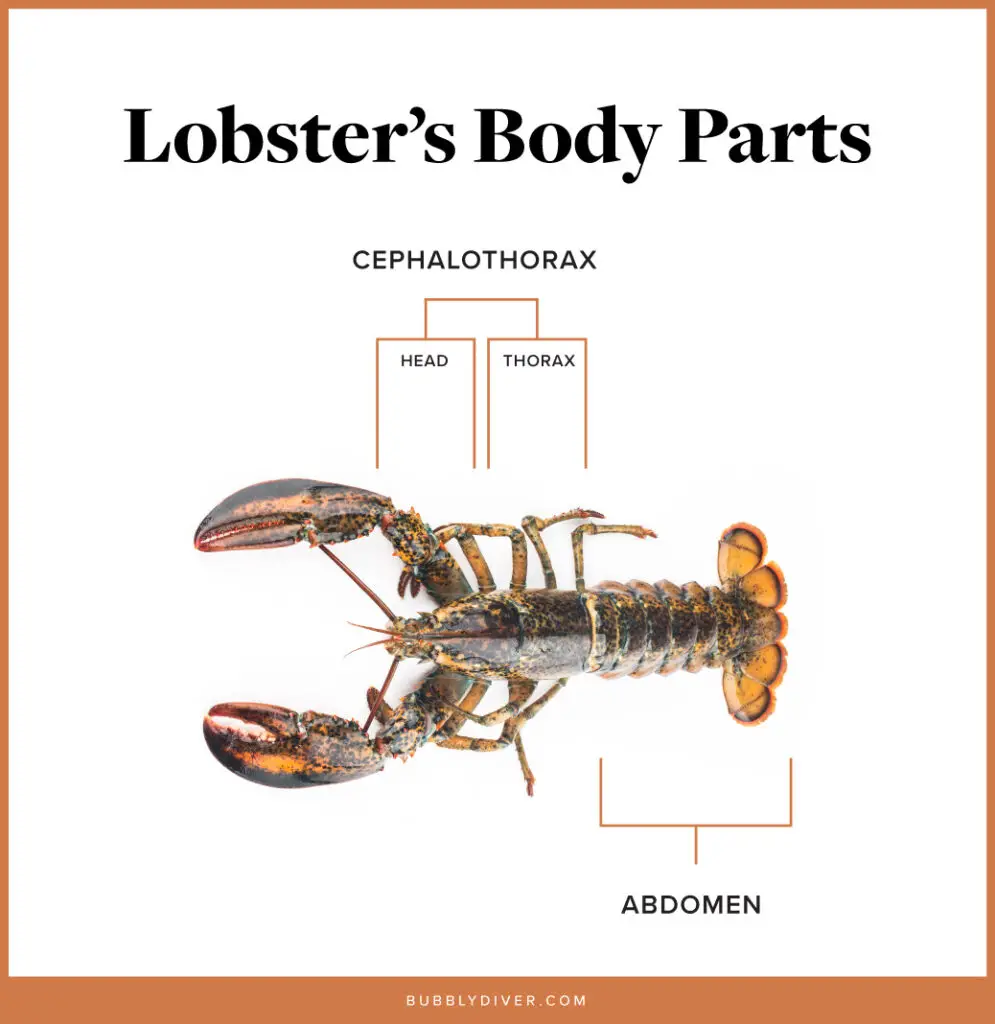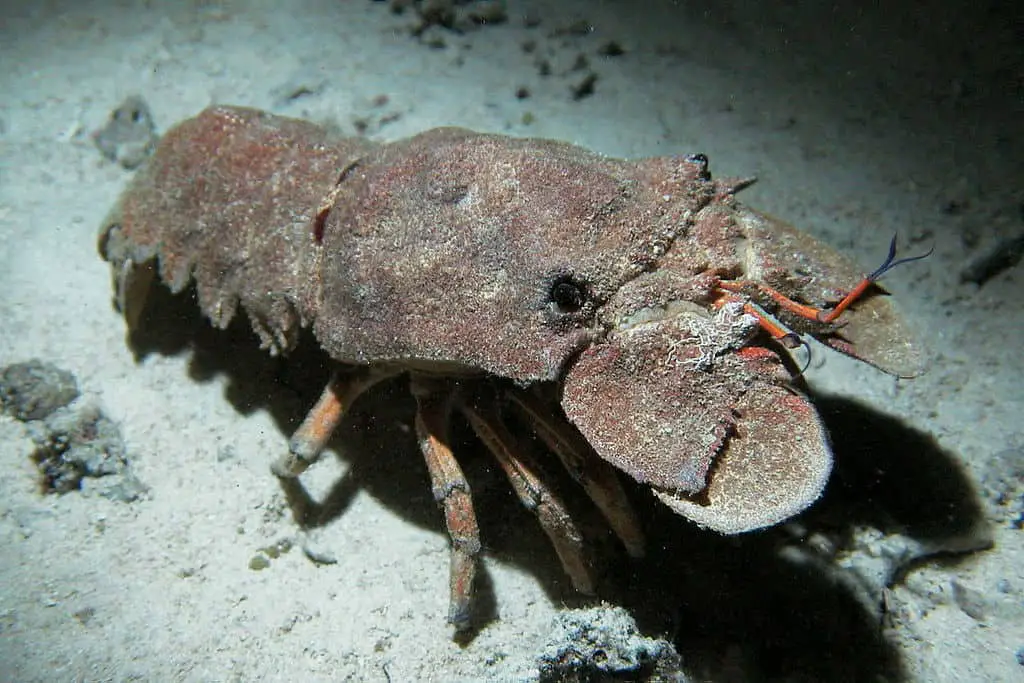Are Lobsters And Spiders Related? (Explained)
Lobsters and spiders might share some common features in their appearance, such as many walking, jointed legs. Therefore, if you wonder if lobsters and spiders are related, in this article, we’ll talk all about that. However, let’s begin with a quick answer:
Lobsters and spiders are related as they belong to the same phylum Arthropoda. However, their relationship is distant because they’re divided into distinct subphyla and classes. Lobsters belong to the subphylum Crustacea (crustaceans), and spiders to Arachnida (arachnids).
However, this certainly doesn’t tell the whole story. Below I’ll explain more about the lobster and spiders relationship and what are the main differences and similarities between them. Furthermore, I’ll explain more about what kind of animals lobsters actually are. Read on!
The differences between lobsters and spiders
There are a few major distinguishing features between lobsters and spiders, as they don’t even belong to the same subphylum and class. Below you can read about the biggest differences between them.
Classification
Animal kingdom classification is a system that helps us to understand how all living organisms are related. This system divides the animal kingdom into phylum, subphylum, class, order, suborder, family, genus, and species.
Spiders are arachnids – animals that belong to the class Arachnida. This class is a part of the subphylum Chelicerata and phylum Arthropoda. Lobsters, however, belong to the class Malacostraca, and animals in this group are called malacostracans. This class is part of the subphylum Crustacea and phylum Arthropoda.
As you can now see, lobsters and spiders are related as they belong to the same phylum, sharing a common ancestor. That’s why you may notice a few similarities between them. However, they also have a lot of differences as they belong to different subphyla and classes.
Lobsters are much more closely related to animals in the same class, such as crabs, crayfish, shrimp, krill, prawns, or woodlice. Spiders are closely related to scorpions, ticks, or mites.

Eyes
One of the differences between lobsters and spiders is their eyes. Lobsters and other animals in their group have a compound eye. The compound eye consists of hundreds or thousands of tiny light-sensitive parts (called ommatidia). Each of these units serves to focus light on the retina and create a portion of an image.
In contrast, spiders have simple eyes. This means that each eye has only a single lens to receive and process light and visual information. Most of these animals, however, don’t have good eyesight and rely on touch, vibration, and taste stimuli to navigate.
The other difference between lobsters’ and spiders’ eyes is their number. Lobsters have two eyes located on stalks. Spiders can have different amounts of eyes. Some species have eight, others six or some don’t have eyes at all.
Appendages
Another difference between lobsters and spiders is their appendages. Lobsters have five pairs of legs called pereiopods. They can be slightly modified, depending on the lobster’s species. For instance, clawed lobsters have the first pair of legs modified into large claws.
Spiders, however, have four pairs of legs, just like scorpions and other arachnids.
Antennae
Another thing that set lobsters from spiders is two pairs of sensitive antennae. Lobsters use their sensory antennae to smell and locate food as well as to sense danger. Antennae are located in front of their heads, and depending on the animals and species, their length can differ. None of the arachnids have antennae.
Interestingly, all lobster species have their antennae, but their appearance and length differ. For instance, spiny, non-clawed lobsters have very long antennae that help them protect themselves from predators. Lobsters with claws, however, have shorter and thinner antennae, but they use their claws as a primary defense mechanism.
Breathing
Lobsters breathe in a different way than scorpions as their habitat is significantly different. Lobsters use gills to absorb the oxygen from the water. They take the water in through the opening between their legs and then absorb the oxygen. Interestingly, they can survive out of water for a certain amount of time if their lungs stay moist, but they can’t absorb the oxygen directly from the air.
Spiders don’t have gills. Instead, they have two types of respiratory organs: the book lungs and the trachea. They also can’t breathe underwater as lobsters do, but some species can live underwater (Argyroneta aquatica) for a very long time and survive underwater for about 24 hours.
Habitat
As you can imagine, the habitat of lobsters and spiders differs significantly. Lobsters live on sandy or rocky seafloor, where they hide in their shelters. Depending on the species, they can be found in colder or tropical waters. For instance, clawed lobsters can be found in the North Atlantic Ocean, and spiny lobsters in the Caribbean waters.
Most spiders are terrestrial, which means they live mainly on land. Their exact habitat strongly depends on species, but they live in almost every habitat on earth, except the polar regions or the highest mountains (and the oceans).
Lifespan
Another difference between lobsters and spiders is their lifespan. Interestingly, some lobsters can live even over 100 years! They also don’t age the way most animals do because they keep growing and reproducing all their life. However, they’re immortal, and they usually die from exhaustion during the molting process.
Spiders usually live much shorter, and their average lifespan is about two years. Some species, like common house spiders, can live less than that, but some species can live much longer. For instance, tarantulas usually live well over 10 years.
Similarities between lobsters and spiders
Lobsters and spiders have also a lot of similarities as they belong to the same phylum. Below you can read about the biggest similarities between them and see how these animals are related.
Jointed legs
The name of the phylum Arthropods that both lobsters and spiders belong to means “jointed legs” (arthro = joint, pod = foot). All these animals have a hard exoskeleton that could create a problem with the flexibility of their appendages. This is where having jointed legs solves the problem.
Most of the appendages of lobsters and spiders bend at joints, which are softer and bendable. This allows them to create a movement similar to what a suit of armor does. These animals control limbs by contracting their muscles connected to the exoskeleton on both sides of the joint.
Body segmentation
Lobsters and spiders have their body divided into two different parts: a cephalothorax and an abdomen. The cephalothorax is a fusion of the head and the thorax (the middle body part). The cephalothorax contains the antennae (only in the lobster’s case), eyes, mouthparts, and legs.
The abdomen is a flexible tail that, in lobsters’ case, allows them to swim rapidly to escape predators. Spiders use their abdomen to release silk to make webs or for reproduction.

Exoskeleton
Both scorpions and spiders have an exoskeleton, which is an external skeleton. These animals are fully covered by this hard and calcified shell, which supports and protects their bodies. They don’t have any internal skeletons, which makes their internal systems very delicate.
Interestingly, exoskeletons don’t expand as animals grow inside them. Therefore, lobsters and spiders have to molt their “shells” as they grow larger. In order to do it, they usually crack the outer shell in one spot and flex their body repeatedly until they’re finally out of the old shell.
The frequency of molting depends on the animal’s life cycle – younger individuals grow faster than older ones. Juvenile lobsters can molt every few days/weeks, and adult species molt once every year or once every two years.
Bilateral symmetry
All arthropods, including spiders and lobsters, have a bilateral symmetry, which means the right half of their bodies is the mirror image of their left half — just like human bodies. The internal organs, however, aren’t necessarily placed symmetrically.
What animals are lobsters?




You may also like:

Welcome to Bubbly Diver!
I’m glad to see you here. This blog is created for all marine creature lovers by a bubbly diver - me, Dori :)


